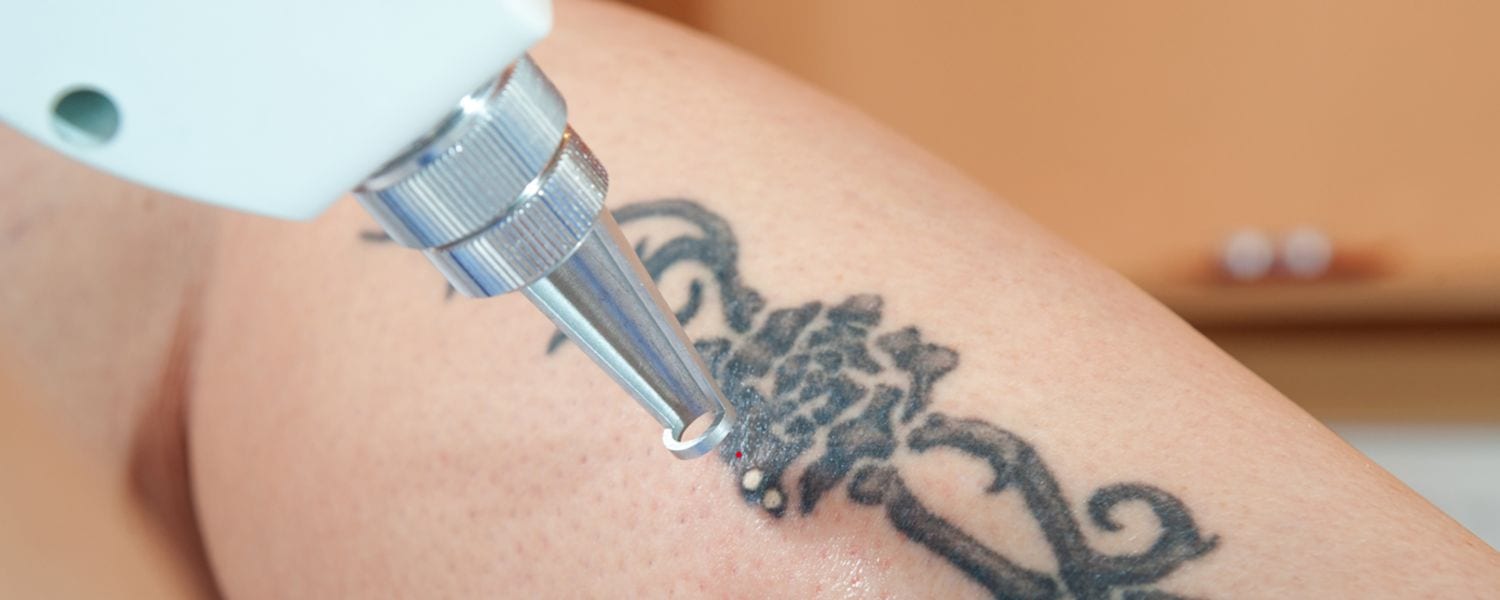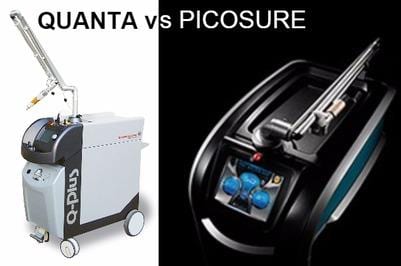Table of Contents
QUANTA VS PICOSURE – Q-SWITCH VS PICO
It is a big decision deciding on laser technology, whether you are a clinic purchasing equipment or a patient considering treatment. This article will compare the Quanta Q Plus C and PicoSure lasers in terms of their tattoo removal abilities. Although the differences are pretty substantial between these two devices, both machines are highly sought after in this industry.
So, what is be the bottom line?
Between the two machines, this article outlines the five most significant differences in the following sections:
Color Treatment Abilities
Between these two machines, the ink color removal abilities are the most significant differences.
Pre-selected light absorption spectra are present in all the ink colors have. The absorption spectrum of the pigment must be included in the laser for an effective treatment.
There will be 4 accurate laser wavelengths as follows:
1064 – Grey, black, dark blue, and brown
694 – Blue and green
532 – Orange, red, and yellow
755 – Blue, black (not as practical such as 1064 above), and green
There are three wavelengths (532, 1064, and 694) in Quanta Q plus C machine. The effective treatment for all the tattoo colors in one device is offered just in this laser machine on the market.
There is only one wavelength (755) in PicoSure. The 755 cannot treat oranges, reds, or yellows but can treat greens & blues.
This device cannot treat blacks nearly as effectively as the wavelength 1064 on the Quanta. However, it can also treat black tattoos.
Differences in Pricing
Rather than for patients, this comparison is relatively suited more for clinics. Between both lasers, the difference in pricing is very substantial.
We’ve found the following prices to be MSRP estimates:
For PicoSure, $200-300k Estimated
For Quanta Q Plus C, $150k Estimated
Differences In Power: Picosecond vs. Nanosecond Technology
Quanta Q plus C’s peak power is measured as one billionth of a second or in nanoseconds. While the peak power for PicoSure is measured as one trillionth of a second or in picoseconds.
For a few years now, both devices have been trending on the market. In contrast to any other current, comparable lasers available in the market, both machines guarantee fast and effective results.
But here’s the kicker:
In comparison to nanosecond technology, the Picosecond technology does not offer any “faster” results.
So, now that we’ve seen results from both lasers. The Quanta is way more powerful, especially for red and black, to entirely remove tattoos with more efficacies.
Circle Beams Vs. Square
PicoSure/CynoSure systems have circle beams while Quanta Lasers, on the other hand, have square beams.
Either a Q-Switched laser emits energy in a round spot or square spot. The shape that comes in contact with the skin’s surface is the exact shape of the handpiece.
The beam shape becomes very important for this very reason.
Much greater control is allowed by a square beam over the treatment amount the skin usually receives. Equal distribution of energy across the beam becomes easy for the technician.
Having been found on more traditional, older lasers to fully cover Circle beams can cause overlap in the tattoo area being treated.
During the treatment, to easily cover the skin surface with minimal overlap, the square spots can be easily stacked next to one another.
In Conclusion
A Picosecond laser operates at one trillionth of a second, and has a pulse width that is 100 times faster than that of the Q-Switched laser.
The Q-Switched laser uses a technique that is highly intense, yet ultra-short in pulse durations. It’s considered the ‘Gold Standard’ of tattoo removal by health professionals and operates in nanoseconds, which is equal to one billionth of a second.
Both machines are fast, and extremely popular when it comes to laser tattoo removal.
In conclusion, we feel both machines do an excellent job in removing tattoos, that’s why we offer both machines at our clinics.






